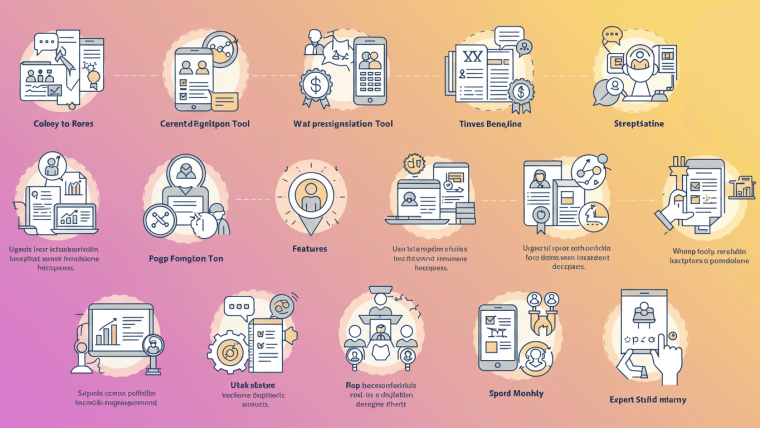Launching a product is always a big deal. But in today’s digital world, things have shifted. Traditional launch events are no longer the only way to create excitement. Now, many businesses turn to virtual events. And they’re not just a backup plan — they’ve become one of the smartest tools in modern marketing.
Whether you’re a startup or a big brand, virtual events give you a strong platform to introduce new products globally, without the limits of physical locations.
Let’s dive into how virtual product launches work, why they matter, and how you can plan one that gets real results.
Why Virtual Events Are Now Essential for Product Launches
In the past, companies often spent huge amounts on in-person product launches — booking venues, flying in guests, arranging catering. That’s changing.
Virtual events remove those barriers. You can invite thousands of people, share your message directly, and do it all from a single platform. Costs drop. Reach grows.
Most importantly, you control the entire experience. That makes them ideal for tech products, SaaS platforms, mobile apps, or even physical goods.
Virtual events provide great opportunities for coaches and consultants to engage their audience and promote products.
How Virtual Events Improve Reach and Impact
One of the biggest advantages is audience reach. A traditional event might draw 300 guests. A virtual one? Ten times that — or more. No one has to travel. All they need is a link.
You also get built-in analytics. You can track who joins, how long they stay, what they click. That data helps you fine-tune your next moves.
And let’s not forget social sharing. If your event is exciting and easy to access, your audience will spread the word online. That builds organic momentum.
Planning a Virtual Event That Actually Works
Running a virtual event doesn’t mean opening Zoom and hoping people show up. It takes strategy. Start with clear goals. Are you aiming for sales, leads, or just brand buzz?
Then choose the right format. That could be a live stream, a pre-recorded launch video, or a hybrid experience with Q&A sessions.
Make sure the tech is smooth. A small glitch during a launch can damage the first impression of your product. Test everything before you go live.
Choosing the Right Platform for Your Virtual Launch
Not all virtual platforms are the same. Some offer live chat, polls, or breakout rooms. Others are focused on streaming quality and stability.
Look at your product and audience. If your users are tech-savvy, interactive features might work well. If not, keep it simple and professional.
Popular tools include Zoom, StreamYard, Microsoft Teams, Hopin, and custom landing pages built on platforms like Livestorm or even your own website.
Whatever you pick, make sure it matches your brand and supports your goals.
How to Build Pre-Event Buzz
Your virtual event starts long before you go live. You need to build hype.
Use email campaigns to tease the event. Create short preview videos. Drop hints about what’s coming. Let people register early.
Set up countdown timers on your site. Post sneak peeks on social media. If you can, get a few influencers in your niche to talk about the launch. This builds early interest and a sense of urgency.
What to Include in the Event Agenda
A strong agenda keeps people engaged. Don’t make it too long or too packed.
Start with a welcome message. Then explain the problem your product solves. Next, show the product in action. Use a demo that’s smooth and polished.
If possible, add live testimonials or client stories. End with a Q&A or a live offer. That way, the audience stays involved and feels they’re part of something new.
Keeping the Audience Engaged During the Launch
It’s easy to lose attention online. So your virtual event needs energy.
Use high-quality visuals. Keep the tone friendly but sharp. Change speakers or visuals every few minutes to keep the flow interesting.
Allow real-time chat or questions. That makes it feel less like a broadcast and more like a shared moment.
Adding a giveaway or exclusive access offer at the end helps too. People stick around longer when there’s a reward waiting.
Post-Event Follow-Up Is Key
Don’t stop when the event ends. This is your next big step.
Send thank-you emails to all attendees. Share the event recording. Add links to your product page or sign-up form.
If some guests registered but didn’t attend, follow up with a replay offer. That gives your content a second life — and lets you convert leads that were missed.
Use the analytics you gathered to see who was most engaged. Focus your next outreach on them.
Measuring Success: What to Track
After the launch, measure everything.
Look at attendance numbers. Watch times. Click-through rates. New signups. Sales. All of this tells you what worked and what didn’t.
Track mentions on social media too. That shows if your message is spreading organically.
If your goal was to get leads, check how many moved into your sales funnel. These insights will shape your future launches.
Examples of Brands Using Virtual Events Right
Many big names now launch products through virtual events.
Apple has used slick virtual showcases for iPhones and software updates. Tesla reveals new vehicles online. Even smaller SaaS companies are gaining traction with well-executed webinars.
You don’t need a billion-dollar budget to do this well. What matters is clarity, quality, and value for your audience.
Is a Virtual Event Right for You?
If your audience is online, if your product is digital, or if you want to grow fast without heavy costs — then yes, a virtual launch makes sense.
It allows you to stay flexible, scale fast, and adapt to audience behavior. Plus, you’re building a digital asset that can keep converting for weeks or months after the event.
Final Thoughts
Virtual events are no longer an optional part of product marketing. They are essential.
With the right planning, tools, and strategy, your virtual product launch can match — or even outperform — traditional events. You’ll reach more people, spend less, and get clear results that help you scale.
So the next time you have something new to show the world, consider going virtual. The future of product launches is already here — and it’s online.








Webinar Analytics: A Complete Guide to Measuring Success and Improving Performance
The Ultimate Webinar Follow-Up Strategy to Turn Attendees into Customers
Webinar Accessibility Best Practices: How to Make Your Online Events Inclusive for All
Webinar Personalization: Tailoring Content to Audience Segments for Maximum Engagement